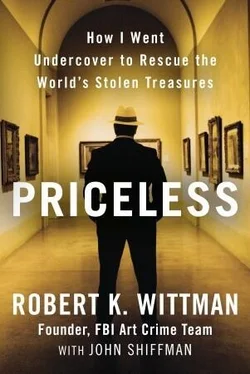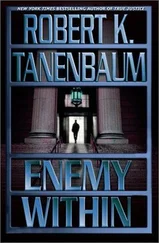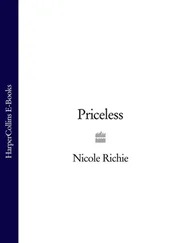After the strawberry-eating contest wound down and I “sold” the paintings to the Colombian in a drawn-out dog-and-pony show, the yacht began a slow return to the dock. I strolled out to the stern, alone with half a glass of champagne, and turned to face the brisk sea air. I needed it. I’m generally a mellow, optimistic guy—I never let the little stuff get to me—but lately I’d been irritable. For the first time an undercover case was keeping me awake at night. Why was I risking my life and my hard-won reputation? I had little left to prove and a great deal to lose. I knew Donna and our three kids could feel the stress. We were all watching the calendar. In sixteen months, I’d be eligible for retirement with a full government pension. My supervisor in Philadelphia was an old buddy who’d look the other way if I coasted through that final stretch. I could teach undercover school, hang out with the family, sketch out a consulting career, groom a young FBI agent as my replacement.
The Pelican slowed as it neared the causeway, and I could just make out the dock, the Rolls waiting by the canopy.
My thoughts skipped back to the missing masterpieces and their intricate empty frames, still hanging in place at the Gardner, some seventeen years after the foggy March night in 1990 when two men dressed as policemen had outwitted a pair of hapless guards.
I studied Sunny and Laurenz, chatting by the bow. They were looking out across the Miami skyline at the dark afternoon clouds and the thunder boomers closing in from the Everglades. The fat Frenchman and his finicky rich friend presented the FBI’s best break in the Gardner case in a decade. Our negotiations had moved beyond the exploratory phase. We appeared close on price and we were already discussing the delicate logistics of a discreet cash-for-paintings exchange in a foreign capital.
Yet I still found it tough to read Sunny and Laurenz. Did they believe our little act on the yacht? And even if they did, would they really follow through on the promise to lead me to the paintings? Or were Laurenz and Sunny plotting an elaborate sting of their own, one in which they would kill me once I flashed a suitcase of cash? And, assuming Sunny and Laurenz could produce the Vermeer and Rembrandts, would FBI and French supervisors really let me do my job? Would they let me solve the most spectacular art theft in history?
Sunny waved at me and I nodded. Laurenz went inside and Sunny came over, a nearly empty glass of champagne in his hand.
I put my arm around Sunny’s shoulder.
“Ça va, mon ami?” I said. “How’re you doing, buddy?”
“Très bien , Bob. Ver-r-r-ry good.”
I doubted it, so I lied too. “Moi aussi.”
Chapter 2
CRIMES AGAINST HISTORY
Courmayeur, Italy, 2008 .
FOR SECURITY, THE UNITED NATIONS MADE THE reservations as discreetly as possible—one hundred and six rooms in an affluent Italian ski resort at the foot of Western Europe’s tallest peak, Mont Blanc. The International Conference on Organized Crime in Art and Antiquities was timed to span a slow weekend in mid-December, between the Noir Film Festival and the traditional opening of ski season. The U.N. took care of everything. It arranged for flights from six continents, gourmet meals, and transport from airports in Geneva and Milan. By the time the buses left the airports early Friday afternoon, there was already a foot of fresh powder on the ground, and the drivers wrapped chains around thick tires before they climbed into the Alps. The buses arrived by dusk, bearing the world’s leading experts on art crime, jet-lagged but eager to convene the first such summit of its kind.
I arrived the night before the conference began, catching a ride from Milan to Courmayeur with a senior U.N. official who organized the meetings. She invited me to dine early with Afghanistan’s Oxford-trained deputy justice minister, and we sat by a table where we could overhear a senior Iranian judge holding forth with a Turkish cultural minister. After dinner, I made my way to the bar, in search of old friends.
I ordered a Chivas and dug into my pocket for a few euros. Through the growing crowd, I recognized Karl-Heinz Kind, the lanky German who leads Interpol’s art crime team. He cradled a milky cocktail and spoke with two young women I did not know. By the fireplace, I saw Julian Radcliffe, the prim Brit who runs the world’s largest private art crime database, the Art Loss Register. He had the ear of Neil Brodie, the famous Stanford archaeology professor. My drink arrived and I pulled a list of participants from my pocket. No surprise, the Europeans dominated, especially the Italians and Greeks. They always devote significant resources to art crime. I studied the less familiar, more interesting names and titles—an Argentine magistrate, the Iranian judge I’d seen earlier, a Spanish university president, Greece’s top archaeologist, a pair of Australian professors, the president of South Korea’s leading crime institute, and government officials from Ghana, Gambia, Mexico, Sweden, Japan, all over. A dozen Americans were on the list too, but reflecting our nation’s lukewarm commitment to art crime, almost all were academics. The U.S. government sent no one.
I’d just retired from the FBI and now ran an art-security business with Donna. The United Nations had invited me to speak at this conference because, unlike any of the other participants, I’d spent twenty years in the field as an art crime investigator. The other speakers would cite statistics and notions of international law and cooperation, presenting position papers on topics I knew well—like the oft-cited estimate that art crime is a $6-billion-a-year business. The United Nations had asked me to go beyond such academic and diplomatic talk—to explain what the shady art underworld is really like, to describe what kinds of people steal art and antiquities, how they do it, and how I get it back.
Hollywood has created a dashing, uniformly bogus portrait of the art thief. In movies, he is Thomas Crown—the clever connoisseur, a wealthy, well-tailored gentleman. He steals for sport, outfoxing, even seducing, those who pursue him. The Hollywood thief is Riviera cat burglar Cary Grant in To Catch a Thief , or Dr. No in the first James Bond movie, Goya’s stolen The Duke of Wellington hanging in his secret underwater lair. The Hollywood art crime hero is Nicolas Cage, descendant of a Founding Father in National Treasure , solving riddles, recovering long-lost treasures. He is Harrison Ford as Indiana Jones with fedora and bullwhip, deciphering hieroglyphics, saving the universe from Nazis and commies.
Plenty of art thefts are spectacular, the stuff of movies. In the Boston heist, the Gardner thieves tricked the night watchmen with a ruse and bound them eyes to ankles with silver duct tape. In Italy, a young man dropped a fishing line down a museum skylight, hooked a $4 million Klimt painting, and reeled it up and away. In Venezuela, thieves slipped into a museum at night and replaced three Matisse works with forgeries so fine they were not discovered for sixty days.
But art theft is rarely about the love of art or the cleverness of the crime, and the thief is rarely the Hollywood caricature—the reclusive millionaire with the stunning collection, accessible only by pressing the concealed button on the bust of Shakespeare, opening the steel door that reveals the private, climate-controlled gallery. The art thieves I met in my career ran the gamut—rich, poor, smart, foolish, attractive, grotesque. Yet nearly all of them had one thing in common: brute greed. They stole for money, not beauty.
As I said in every newspaper interview I ever gave, most art thieves quickly discover that the art in art crime isn’t in the theft, it’s in the sale . On the black market, stolen art usually fetches just 10 percent of open-market value. The more famous the painting, the harder it is to sell. As the years pass, thieves get desperate, anxious to unload an albatross no one wants to buy. In the early 1980s, a drug dealer who couldn’t find anyone to buy a stolen Rembrandt worth $1 million sold it to an undercover FBI agent for a mere $23,000. When undercover police in Norway sought to buy back The Scream , Edvard Munch’s stolen masterpiece known around the world, the thieves agreed to a deal for $750,000. The painting is worth $75 million.
Читать дальше












